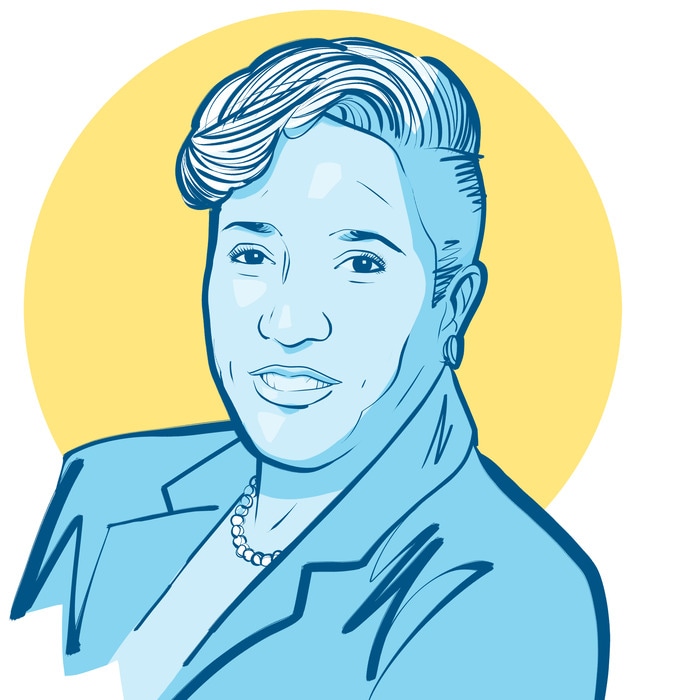Raising voices has been saved

Perspectives
Raising voices
In a crowded and ever-changing media landscape, organizations are using content creation solutions from unexpected sources of inspiration.
It is unequivocally the age of content overload. We scroll through it on our phones, we stream it to our TVs, we can read novels from the face of our smartwatches. According to Statista’s most recent estimates, around 120 zettabytes—that’s another 21 zeros—of data will be generated this year, with that number climbing to a projected 181 zettabytes in 2025. But in a time of such unparalleled digital connectivity—when it’s never been easier to reach audiences—it’s never been harder to get them to care.
Powerful, authentic storytelling is increasingly more important. The attention economy is crowded; content-delivery technology seems to change minute by minute. In these conditions, organizations that aren’t constantly reevaluating norms and adjusting best practices may find it difficult to keep up.
To determine what content will best resonate with their audiences, many organizations take a time-honored approach: Corporate marketing departments rely on external market research; news outlets defer to the reporters and editors deeply embedded in their beats. But two organizations—NYU Langone Health and The Exchange—are reaching audiences in ways that buck the conventional wisdom of their respective fields. In collaboration with Deloitte, they’ve flipped the script, pulling resources and inspiration from unexpected places to tell stories that likewise defy expectation.
Creating content is about an agile an exercise as you’ll find. Matching your vision for what your organization wants to say to what your end audience—be it consumers, readers, or employees—actually cares about should be a deeply considered process. And sometimes, what you learn from your audience is going to force your organization to reevaluate what it thought was important in the first place.
Messaging from the inside out ...
In 2023, NYU Langone Health was ranked the number one hospital in New York State and number three in the nation. Its Grossman School of Medicine was ranked number two nationally just last year.
What makes these distinctions more impressive is the culture that powers the organization.
Researchers, surgeons, medical students, janitorial staff —all work towards this one North Star. Even small changes to policy have gone a long way: Something as simple as standardizing discharge before noon across the system has turned a logistical headache for patients and loved ones into a timely and predictable process.
In collaboration with Deloitte, Cohn and her colleagues sought to leverage this system-wide commitment to excellence in patient outcomes toward a world-class messaging strategy. The goal was to “understand why culture matters when choosing a hospital – and why the hospital you choose matters,” says Leyland Streiff, managing director at Deloitte, “Not by telling them, but by showing them the real doctors, real programs, and real outcomes that only NYULH’s culture can deliver.”
By deploying a variety of recommendations to improve organization-wide patient communications and launching #TheBestOutcomes campaign, currently in its third year, Deloitte has helped NYU Langone turn an organizational rallying cry that echoes far beyond hospital walls. The messaging cuts through the common tropes of hospital marketing and breaks category conventions, by being rooted in absolute authenticity – doing, saying, and showing what only NYULH can (and has) done.
“The transformation of culture at NYU Langone has transcended the institution itself,” says Aaron Sidorov, group creative director at Deloitte Digital. “It has inspired the highest degree of creativity in everything from the care they provide, to the way they communicate with the world.
And according to Cohn, this unexpected, inside-out method of engaging the community continues to be a resounding success: “Brand recall has gone from nearly invisible to the highest in New York.”

Debbie Cohn
Vice President of Marketing and Digital Communications for NYU Langone Health
Everyone is inexorably linked to create the best patient experience and most importantly, the best patient outcomes, says Debbie Cohn, vice president of marketing and digital communications for NYU Langone Health. it’s an exciting story to tell, because it’s a unique story.
... and learning from the outside in
Collaboration between local news outlets is hardly a new phenomenon. But by uniting those such news organizations’ deep knowledge of their communities with the research capabilities of a global corporation, Deloitte is helping to unearth a new world of opportunity. The project is called The Exchange.
The unique access and community relationships of such papers are precisely what drew Deloitte to approach the Local Media Consortium (LMC) and Local Media Association (LMA) about piloting the collaborative project, which aims to create business and financial content for underserved communities. The pilot program includes five initial publications that serve their respective Black communities: The Houston Defender, The Seattle Medium, New York Amsterdam News, The Atlanta Voice, and AFRO American Newspapers.
Those publications then share the co-created content with an additional ten publications, dramatically broadening the content’s reach. The overall mission: to support and amplify the publications and the diverse voices and perspectives they represent.
For many reasons, the Black press was the perfect opportunity for such a content collaboration—it’s a network of local news publications whose operations go back centuries, written by and for America’s Black communities. “One of the legacies of the Black press is, we’re a family as far as the community is concerned,” says Sonny Messiah Jiles, CEO of the Defender Network, a leading news source which has served Houston's Black community since 1930.

Sonny Messiah Jiles
CEO of the Defender Network
And it’s this direct stake in the people they cover that has allowed Black press outlets to survive both the historical tumult inflicted on America’s Black communities and an increasingly rough business terrain for local media. “We have the advantage and the privilege to cover our community in depth. Mass market media can’t do that,” says Dr. Francis “Toni” Draper, chairman of the board and publisher of the Baltimore-based AFRO American Newspapers, which was founded by her great-grandfather in 1892.
“These publications have earned trust by being part of the community for generations,” says Jeff Pundyk, Managing Director of Deloitte Insights. “They’re literally embedded in the community, they’re part of the community. They’re not just parachuting in for the story.”
At the heart of the program is Deloitte sharing its wealth of research and data with reporters at participating publications to produce compelling, local stories on business and finance for communities that often can’t access anything like it.
But equally important has been the sourcing of direction from the voice of actual readers. With Deloitte’s assistance, all five pilot publications conducted thorough, in-person feedback sessions with subscribers—giving their readers a rare opportunity to weigh in on the topics most important to them, and therefore shape the direction of The Exchange’s content. The takeaway? Readers were looking for stories with real impact on their day-to-day lives: financial inclusiveness, equity in health, and success stories featuring Black businesspeople.
At one level, this was momentous just because it happened at all—such sessions were new for both publications and helped solidify relationships across their respective audiences. But equally importantly, these surveys consistently revealed an appetite for stories that highlight not just the problems facing Black communities, but their solutions.
The first set of articles written with respect to survey findings explored the impact of home ownership on building transgenerational wealth. Participating publications each took a different approach relevant to their community. Together, they knitted together a national story. For The Houston Defender, this resulted in a series of articles about Millennials’ relative lack of access to capital to buy homes. The stories didn’t simply report on the problem—they explored money management strategies that readers could discuss with their Millennial children.
The series was so popular that The Defender is now planning a whole section in its upcoming special business edition devoted to family discussions on financial planning. The next set of articles is based on Deloitte’s research on health equity, which will be followed by success stories from businesspeople in their respective communities.
And thanks to this unexpected content strategy introduced by The Exchange, papers like The Defender and AFRO are only seeing their already robust community ties grow stronger.
“In both our survey and our focus groups, the feedback we got was, ‘Thank you so much for just asking us, for inviting us into the room,’” Dr. Draper says. “We’ve had people call us and ask, 'When are you doing another one?’
Both the publishers and Deloitte agree that the program has opened up new opportunities to engage with readers—and they’re currently working together to scale the program for even bigger impact in the future.

Dr. Francis “Toni” Draper
Chairman of the Board and Publisher of AFRO American Newspapers
“To me, when you give me action steps, that’s empowering,” says Jiles. “That’s a proactive approach, not a reactive approach.”
Defy conventions, defy expectations
Few industries change faster and more radically than the media, where today’s strategies for success are quick to become tomorrow's old news. And that means organizations that rely on conventions of the past will struggle to reach audiences in a future where the rates of innovation and change will only quicken.
But with Deloitte’s help, NYU Langone Health and The Exchange have taken risks that defy longstanding conventions of their industries—and reaped the rewards. And thanks to equally strong senses of purpose and identity, they’ve done so while preserving something that is so often a casualty of scale and innovation: They’ve never forgotten where they came from.

Engineered for the Unexpected
Relying on evolutions of what worked last year isn’t enough. Companies now need unexpected teams, technologies and ambitions to build modern strategies—and empower tomorrow’s positive futures.


